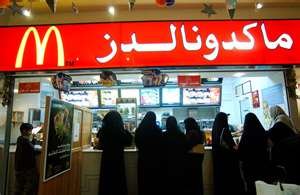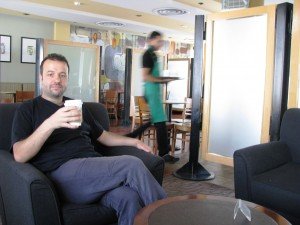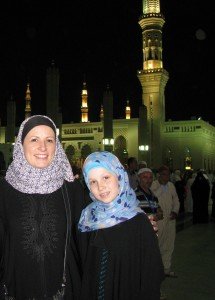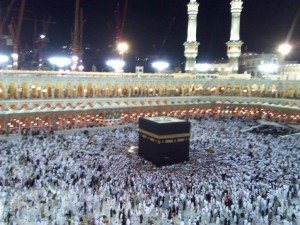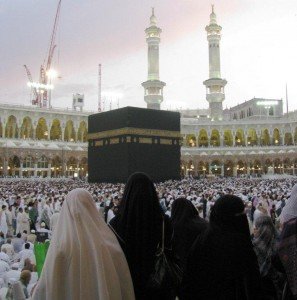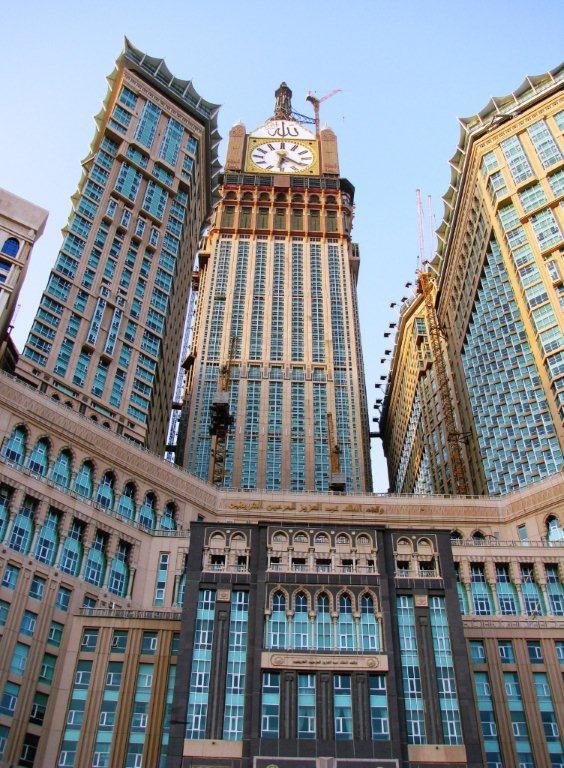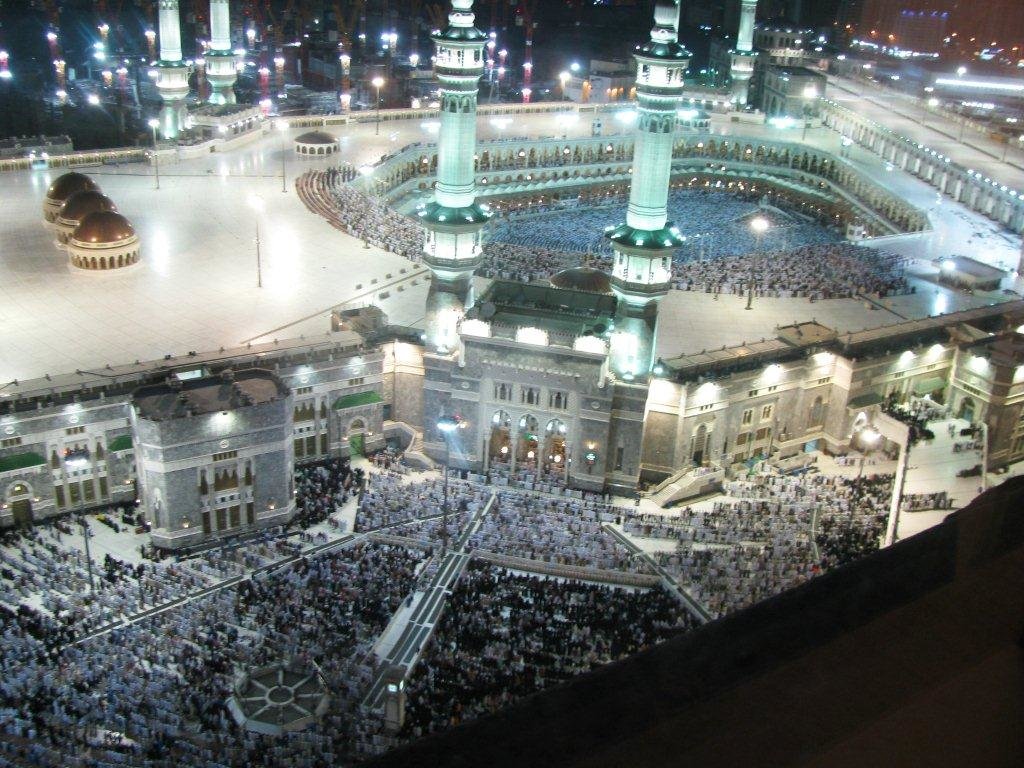Mecca & Medina without a Map
When we got our visas for Saudi Arabia, the first thing I did was grab my Lonely Planet Guide to the Arabian Peninsula. I turned to the chapter on Saudi Arabia—seventy-five pages describing the cities and regions of Saudi. But wait!
There was no mention of Mecca or Medina. How had I missed it? I turned the pages one by one, flipping past maps of Riyadh, Jeddah, Dammam, and Al-Khobar. Aside from one line about Hajj visas, there was no word about Mecca or Medina.
Of course, entry to Mecca and Medina is permitted to Muslims only. The holy cities are so inaccessible that even Lonely Planet didn’t dare write about them. (Don’t they have Muslim travel writers? Don’t they realize they have Muslim readers?)
All of this secrecy only increased mystique surrounding Saudi Arabia, reinforcing in my mind the notion of the “last forbidden kingdom.” My imagination grew. I pictured myself in the abaya and shayla I would be required to wear. I wondered if I would have a run-in with the infamous mutawwa, the Saudi religious police. Always the curious traveler, I secretly hoped I would.
Another driver felt the need to tell me, “I hate Osama bin Laden. All Saudis hate Osama bin Laden.” Good to know.
 We spent most of our time in the holy city of Medina, a sleepy getaway town. According to the hotel brochure—as I had no guide or map of the city—the list of “significant sights” was a list of mosques—the Prophet’s Mosque, the first mosque in Islam, and seven mosques for the seven companions of the Prophet. (Peace be upon them all.)
We spent most of our time in the holy city of Medina, a sleepy getaway town. According to the hotel brochure—as I had no guide or map of the city—the list of “significant sights” was a list of mosques—the Prophet’s Mosque, the first mosque in Islam, and seven mosques for the seven companions of the Prophet. (Peace be upon them all.)
In the days that I spent there, I did not encounter the “rich oil country” that Saudi Arabia is known as. The Saudi that I saw was more underprivileged and run-down that I had expected. (Granted, coming from Dubai, even Seattle and Paris look run down to me.) I did, however, get a few glimpses of upscale neighborhoods.
The Saudi women were more modest and less flashy than their Emirati counterparts. Along with the black abaya and shayla, many wore niqab. At first glance, they all looked the same. But if you steal a second look, the variations appear. One wears sandals, one spiky heels, another wears Converse All-Stars.
In a Medina Starbucks, the Arab woman at the next table declared that I was a “beautiful woman.” This was particularly uplifting as I was feeling old and invisible in my black shayla. I wanted to tell her, “And you, too!” but it felt insincere, as I could not see her face, only her eyes peeking out from behind her niqab.
Saudi was not as strictly segregated as I had imagined. There was plenty of interaction between men and women. Saudi women needed to talk to men to order their cappuccino, buy clothing or do any kind of shopping. Everywhere I looked was a Saudi woman speaking to a man that was not her relative. Shocking!
Of course, Saudi Arabia does have its own wacky weird unusual qualities.
Unique Aspects to Saudi
- I bought a TIME magazine, and later, I discovered the pages I wanted to read had been ripped out! (I much prefered the Emirati censors who merely black out offending images, but don’t rip out the whole page.)
- Restaurants and cafés typically have two sections: Single men and Families. My husband and I spent a lot of time in the “Families Section” of Starbucks, where screens provided privacy to us caffeine-addicts. I also noted Starbucks’ trademark naked-mermaid logo was conspicuously absent from the signage.
- Dressing rooms were non-existent. In the mall, I took a stack of clothing from the shop (based on the honor system apparently) and walked to the nearest restroom to try them on. Perhaps the idea of a woman undressing in a shop was too provocative.
- However, sexy lingerie stores were not a problem. Just like in Dubai, they were all over. But in Saudi, women’s teddies and thongs are famously sold by men. According to one of our talkative drivers, the country had recently tried to employ women in these shops, but that attempt had failed—I’m not sure why.
- Regarding Saudi hours of business, shops didn’t simply close for various prayers. They closed all afternoon as well. Restaurants closed a full hour before prayer time to make sure everyone was out on time. This meant that businesses were closed more often than not—a frustrating fact for a visitor.
- Supposedly, the abaya and shayla were required by law when in fact I saw women from various countries wearing their own cultural form of Islamic dress—jilbab, dishdash, sharlwar kameez. The point was to be modest by Islamic standards. It was an interesting experiment to wear hijab for five days. I become temporarily fixated on pins, drape, and hijab styles. I discovered I preferred the long shayla over a square scarf, but in the end, I was content to return to Dubai, where there is no such requirement.
- Women often have their own lines. I saw this as the positive side of segregation. For example, the women’s line in the airport was always shorter!
- On our last day, we were at the Jeddah airport riding a bus to the tarmac on our way out. A man indicated to me that I had a strand of hair showing. I shoved the hair under my scarf, feeling utterly annoyed. Then I realized. Maybe I had encountered the mutawwa after all! Only then was my trip to Saudi complete.
Please share your impressions of Saudi Arabia.
